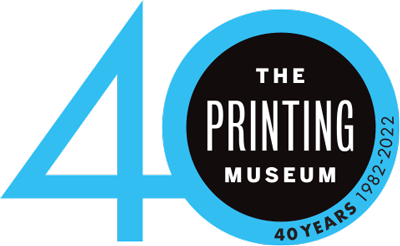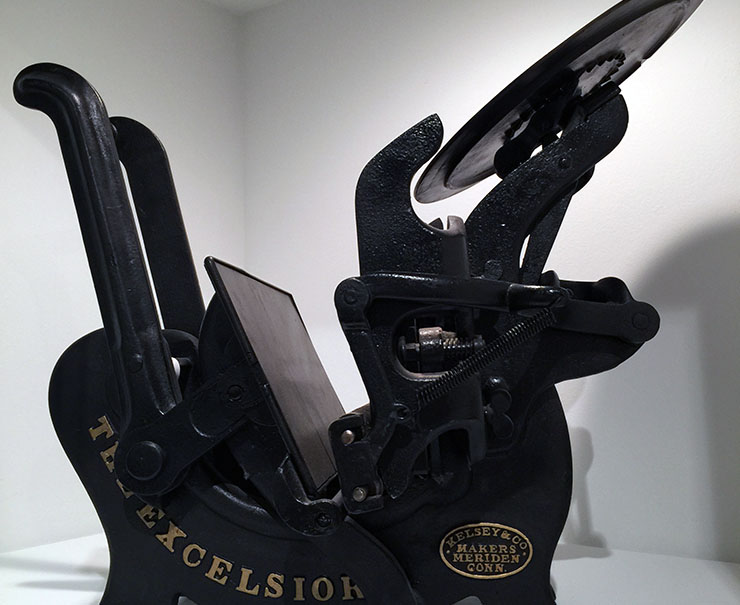Frederick Cordingley Hadfield, born on August 26, 1923, in Virginia, made his first entry into the printing industry in middle school, when he began publishing a newspaper, The Family News, in his basement. He later apprenticed in the Washington Post’s composing room. By 1948 he found his way to Houston, where he eventually opened Bud Hadfield Printers. He went on to found the multimillion-dollar Kwik Kopy Printing Corporation and started the International Center of Entrepreneurial Development (ICED). Hadfield passed away on Monday, August 15, 2011.
The F.C. “Bud” Hadfield Collection is comprised of four main areas, all of which directly relate to the printing industry during the late nineteenth and early twentieth centuries: a variety of library materials, including advertisements, trade and manufacture catalogs, type specimen books and booklets, and instructional materials; legal documents, largely concerning late nineteenth-century patents; printing equipment; and cuts, with which a variety of the advertisements and catalogs were made. The collection was donated to The Printing Museum by Bud’s wife, Mary Hadfield, in 2012.
Within this collection, there is a particular breadth of material surrounding the early founding and development of The Kelsey Press Company (1872-1993). William A. Kelsey (1851-1923) founded his company in 1872, developing a business that directly manufactured, marketed, and sold presses and printing supplies to the amateur printer. While other press companies catered to the changing business needs of nineteenth-century America, where small shopkeepers and private households demanded small presses for small-run productions, Kelsey fully capitalized on this market and actively worked to cultivate and expand it.
Much like Steve Jobs in the late twentieth century brought the desktop computer into the home of the average American family, Kelsey popularized printing to the masses, eventually bringing the tabletop press into the home of the late-nineteenth- and early-twentieth-century American family. Subsequently, it is not surprising that Hadfield, in the latter half of the twentieth century, sought to preserve the legacy of The Kelsey Press Company. Through Kwik Kopy, Hadfield sought to outrival his competition and succeeded by providing quality and quick printing services to small business and individuals. In the end, the creative and entrepreneurial spirit echoed through the assembled printing artifacts are also a reflection of the life and career of their collector, F.C. “Bud” Hadfield.

